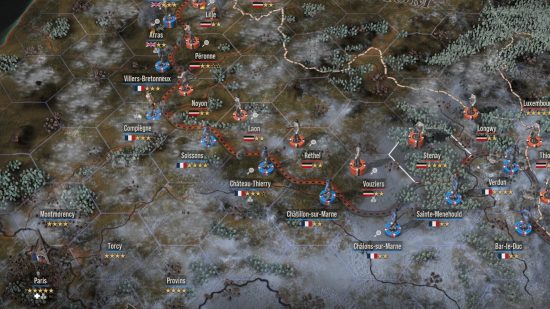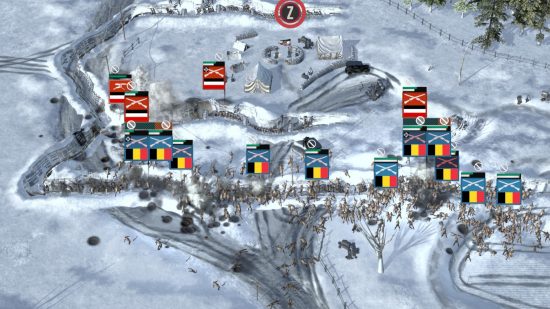After spending several hours exploring the front lines and muddy trenches of one of humanity’s most brutal and oppressive conflicts, the first question I ask myself as I gather my thoughts to write our review of The Great War: Western Front is: I? Should there be? The dark plot alone makes this a strategy game that can be played with raised eyebrows, but there are design and technical issues that have conspired to make it a frustratingly frustrating experience.
The problem that will likely make The Great War a hard sell for most real-time strategy players is its clunkiness. It’s not a game you can just play and play, and no wonder: World War I is a unique conflict that represents the horrific “peak” of what military historians call Second Generation Warfare. . The heroic cavalry charges of the Napoleonic era gave way to artillery barrages, trench lines and miles of barbed wire stretched between France and Belgium from 1916 to 1918.
The Great War: Western Front is an attempt to represent it all, and that necessarily includes a radical departure from the real-time strategy games that the Westwood Petroglyph veterans made their name for. Each battle involves establishing a trench system and upgrading the countryside such as machine gun nests, artillery batteries, and observation balloons before dispatching squads of small soldiers to stake out no-man’s-land, waiting for the next wave of attack.
These battles get more difficult as the campaign progresses as I unlock new technologies like poison gas, bombers, and devastating siege artillery. I can upgrade my trenches and research the best helmets for my infantry, giving them, at least on paper, a better chance of surviving a hectic field rush before they plunge headlong into enemy trenches for battle. .
On top of all that, there’s a war game-style campaign where I take command of the Allies or the Central Powers and try to push the front line wherever I can. There’s a lot going on here, too, including espionage, supply logistics, and ultimately national will, the depletion of which is a condition of campaign defeat.
A large part of me admires the commitment to principle displayed in The Great War: Western Front. Real-time battles often lead to frustrating stalemates that only burn supplies and kill a lot of people. Even successful attacks aren’t enough: each map cell has a number of stars, similar to the fortification level in more traditional war games like Gary Grigsby’s War in the East 2. caught. Key locations like Luxembourg, Calais, and Verdun have four or even five stars, and if I interrupt the location for a turn, it will return one of the stars I removed. There is little room for strategic self-expression here: the only option is to keep throwing people into the meat grinder and hoping for the best.

It’s a surprisingly accurate way of portraying the Western Front, and for better or worse, it makes for downright exhausting gameplay. The battlefield fortifications I build anywhere are preserved and are present when I inevitably fight there, which I often do. I have seen the same battlefield countless times as winter turns to spring and spring to summer, and the maps themselves become pits of scorched mud, devoid of vegetation, buildings, and any terrain features above the artillery crater.
Real-time tactical battles are the centerpiece of The Great War, and I found it hard to enjoy them, if I really have to enjoy them. Again, this is where the issue comes in: sending three companies of soldiers to near-certain death in the vain hope of gaining a foothold in an enemy trench is depressing, but at least it fits the nature of the conflict.

However, it frustrates me even more when I see that not everything works as it should. I often see people not under fire marked “overwhelmed” which means they have their heads down and are unable to fire on advancing infantry. It’s also strange that the only thing that seems to be able to hit them while they’re in the trenches is artillery – they won’t be hit by rifle fire and tanks won’t even try.
Then there’s the enemy AI that’s smart enough to use cheesy tactics like sending a parade of mouths around the far edge of the map to break through a gap in my trench networks, and well I guess I should have sealed this off in phase previous. , but I had enough to reload the save.
For players who are extremely interested in World War I, The Great War: Western Front has some compelling insights, and I think it’s a valuable lesson in the nature of that war on both a tactical and strategic level. The problem for me, however, is that none of this makes it an enjoyable game to play. Maybe this is how it should be.
Great War: Western Front
A dark devotion to history has led to a rules-heavy RTS that is rarely interesting or strategically useful; in other words, a very accurate depiction of World War I and a success, at least in that sense.
Source : PC Gamesn

